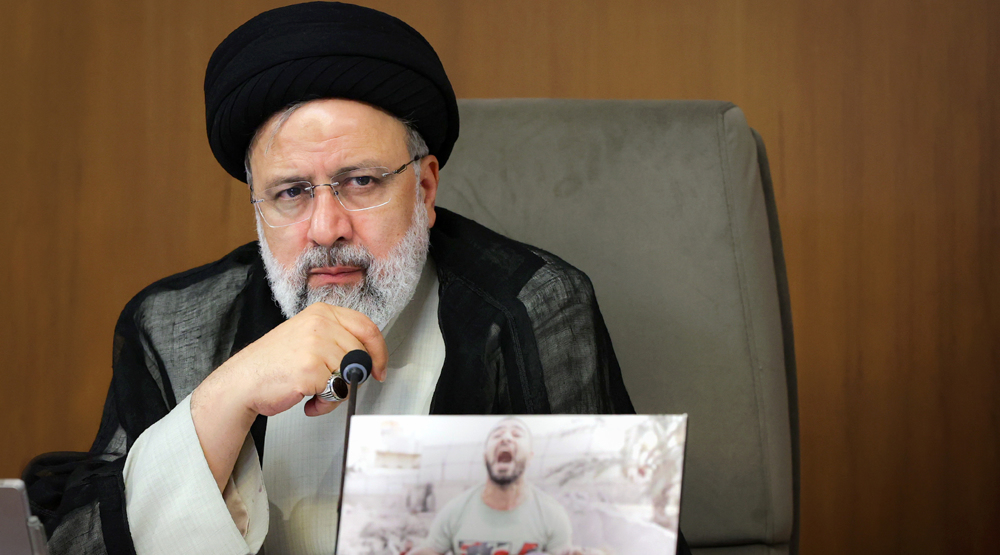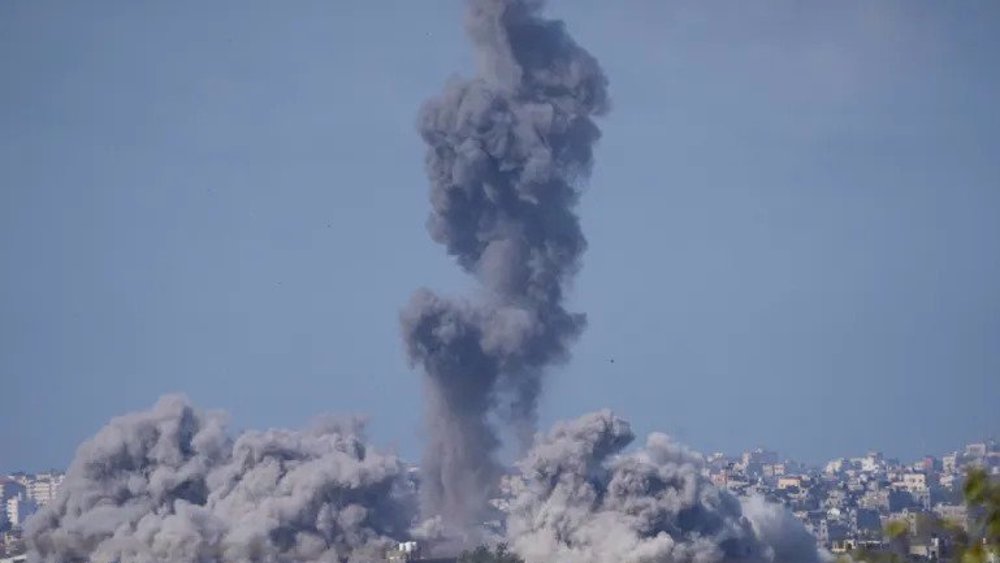Factbox: Israeli regime’s use of white phosphorous bombs in Gaza, Lebanon
By Humaira Ahad
Amid the Israeli regime's indiscriminate bombing of densely-populated civilian areas in the besieged Gaza Strip and south Lebanon, social media has been replete with videos showing the extensive use of white phosphorous bombs.
The use of the banned substance has been widely condemned by international human rights watchdogs, but the Western allies of the Tel Aviv regime have conveniently turned a blind eye to it.
The use of the waxy, yellowish-to-clear chemical came after the occupying regime intensified its blockade of the coastal strip and cut supplies of electricity, water and gas to Gazans.
The white phosphorous bombs were extensively dropped both on the Gaza Strip and in southern Lebanon in recent days as part of the sweeping aerial blitz targeting civilians, mostly children.
According to reports from Gaza, large numbers of people have been affected by it and are battling severe health issues such as breathlessness caused by the smoke screen created by the toxic gas.
Human rights organizations have cited verified videos taken in Lebanon and Gaza on October 10 and 11 respectively, which show multiple airbursts of artillery-fired white phosphorus over these areas.
The use of this substance increases the risk to civilians and amounts to a blatant breach of international humanitarian law, according to human rights advocates.
Pertinently, the regime in Tel Aviv used white phosphorus extensively during its deadly onslaught on Gaza in 2009, which sparked a global outcry at the time.
The use of the substance in civilian areas is prohibited under the United Nations Convention on Conventional Weapons, to which the Israeli regime is not a signatory.
The death toll from Israeli airstrikes in the Gaza Strip has risen to 2,750, according to the latest updates, besides 9,700 injuries. In the occupied West Bank, 58 fatalities and 1,250 injuries have been confirmed by the Palestinian health authorities.
The video reveals the extent of the destruction in Gaza.#GazaGenocide pic.twitter.com/K5V8SDougd
— Palestine Highlights (@PalHighlight) October 16, 2023
‘Arms viewed with horror’
White phosphorous is an incendiary weapon. The UN defines incendiary weapons as those “designed to set fire to objects or cause burn or respiratory injury to people through the action of flame, heat, or combination thereof, resulting from a chemical reaction of a flammable substance.”
The world body has regarded incendiary weapons as “arms viewed with horror.”
“Incendiary weapons are weapons or munitions designed to set fire to objects or cause burn or respiratory injury to people through the action of flame, heat, or combination thereof, resulting from a chemical reaction of a flammable substance such as napalm or white phosphorus," the UN said.
Exposure of white phosphorous to oxygen results in its ignition creating flames that reach temperatures as high as 815° Celsius.
This chemical substance is known to burn structures and is used to ignite fire. Keeping in view its horrible effects, Protocol III of the 1980 Convention on Certain Conventional Weapons prohibits the usage of white phosphorous and other incendiaries to attack civilians.
The chemical is believed to cause severe burns with its ill effects going down to the bones.
One of the most horrendous effects of these white phosphorous munitions is the re-ignition weeks after its explosion, continuing to harm the populations that come in contact with it.
According to medical experts, when white phosphorous comes in contact with the human body, it leads to both thermal and chemical burns which can reach deep down to the bone. The chemical is highly soluble in fat and can easily seep through the human flesh reaching the skeletal system.
The metabolic effects of the chemical are more severe. Upon entering the bloodstream, it can cause multi-organ failure leading to death. Even dressed wounds can reignite when dressings are removed and the wound is again exposed to air.
Minor burns can turn fatal causing long-term suffering of scarring and physical disabilities.
✍️Exclusive: More than 150 members of the al-Saleha family in northern Gaza are putting up in an overcrowded building with no access to drinking water and staring at death amid the Israeli blitz.
— Press TV (@PressTV) October 15, 2023
By @hibamoradd #GazaGenocide https://t.co/ikbcS7FCAQhttps://t.co/ikbcS7FCAQ
Usage of white phosphorous
The earliest use of white phosphorous in wars was reported in the 1800s when Irish nationalists used it against British forces. The formulation came to be known as "Fenian fire".
The British army used it extensively in both the World Wars. Americans also used the toxic chemical weapon against people in the city of Fallujah after invading Iraq in 2003.
Also, it is not the first time the Zionist regime is using white phosphorous in Palestine. Continuing its war crimes, the regime has used munitions on the civilian population in the past as well.
The regime fired phosphorus shells against people in south Lebanon during the 2006 Lebanon War.
During the Gaza war from December 27, 2008, to January 18, 2009, the Israeli military admitted to using white phosphorous munitions in the densely populated Gaza Strip.
According to documented evidence, the Israeli military fired hundreds of ground-launched white phosphorus munitions into densely-populated areas of Gaza at that time, including 155mm M825E1 artillery projectiles, which throw burning phosphorus wedges up to 125 meters in all directions.
According to human rights watchdogs, the regime’s military fired white phosphorus indiscriminately in overcrowded areas of Gaza in 2009, killing and injuring civilians.
In 2013, following a court petition, the Israeli military said it would no longer use white phosphorus in populated areas except in exceptional circumstances, without specifying the “circumstances.”
However, the use continues, as seen in the past week, both in the Gaza Strip and south Lebanon.
UN experts warn Palestine Action hunger strikers at risk of death
Putin: Russia will use force to achieve goals if Ukraine stalls peace negotiations
The Year That Was: Best of ‘Iran First’ in 2025, the year of major Iranian breakthroughs
German journalist says Israeli forces raped her after abducting her from Gaza flotilla
VIDEO | Press TV's news headlines
VIDEO | Israeli forces launch wide-scale military operation in Qabatiya, south of Jenin
Trump-backed push brings Jolani regime, Israel closer to deal: Israeli media
VIDEO | Iraqi govt. rejects any kind of normalization with Israeli regime















 This makes it easy to access the Press TV website
This makes it easy to access the Press TV website